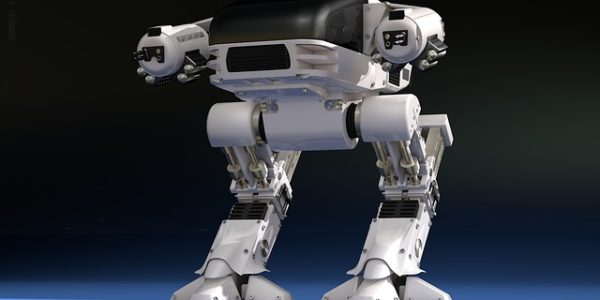Modern robots are amazing. The speed and precision of industrial motion control systems are far beyond anything early factory workers could have ever dreamed of. A century ago, modern industrial robots only existed in science fiction. Those workers would have loved to hear stories about a mighty and fantastic machine known as “Indramat” that could do the work of a thousand men.
But the thing about science fiction is that it often finds its way into the real world. As technologies in robotics, automation, and artificial intelligence advance, will we eventually need to apply a set of laws from science fiction to real life robots?
The link between science fiction and technology
Science fiction often heralds future technologies. Maybe science fiction writers have a good sense of where technology is heading. Maybe it’s because scientists, researchers, and engineers are inspired by science fiction. Perhaps it’s a combination of the two.
The fact remains that we regularly see fantastic science fiction technology make its way into reality.
Will we see something similar happen with Asimov’s Laws of Robotics? Will past fiction influence future technology?
Asimov’s Laws
In 1942, Isaac Asimov introduced The Three Laws of Robotics, otherwise known as Asimov’s Laws in a sci-fi short story called, “Runaround”.
Asimov’s 3 laws – though devised in the context of science fiction – have been debated and delved into as the genesis of law on robots. It states that a robot:
- may not injure a human being or, through inaction, allow a human being to come to harm;
- must obey the orders given by human beings, except where such orders would conflict with the first law; and
- must protect its own existence as long as such protection does not conflict with the above two principles.
Are Asimov’s classic laws relevant to modern industrial robots?
Asimov’s robot laws in real life
These are good laws to follow, and are certainly relevant to industrial robots. You could argue that all three of these laws are currently used in a watered down way.
If you simplify Asimov’s robot laws you basically get:
- machines shouldn’t hurt people,
- machines must do as they’re told,
- and they must not harm themselves.
We currently have sensors on factory machines that help prevent injuries in the work place. Our factory robots follow a list of commands, and cannot do anything they’re not programmed to do. And most factory machines shut down to keep from damaging themselves. So the stripped down versions of these robot laws apply.
However, the non-simplified version of Asimov’s laws imply some type of cognition, or some presence of mind. To prevent harm through inaction requires some programming that would still be considered science fiction today. Do we need artificially intelligent industrial robots?
One of the reasons that industrial machines are so useful is because they are so not human. AI could help manufacturing, but trying to replicate human thought in a factory machine isn’t what we need.
